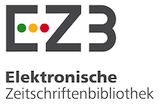CHEMICAL AND ENERGETIC CONTENT OF CORN BEFORE AND AFTER PRE-CLEANING
DOI:
https://doi.org/10.1590/1089-6891v16i217226Keywords:
Amino Acids, Metabolizable Energy, Protein, Starch, Density, Humidity,Abstract
The poultry industry normally has little control over the raw material that arrives at the processing plant. This experiment aimed to evaluate chemical and energetic quality of corn obtained in a feed mill before and after pre-cleaning. Twenty samples of 30 kg of corn each were taken from trucks delivering corn to the mill. The trucks were then unloaded and the material passed through a pre-cleaning process when another sample was taken. Samples were graded and physical properties evaluated: density (g/L), grain percentages of foreign material, impurities, fragments, broken, soft, insect damaged, fire-burnt, fermented, damaged, cracked and fine particles, as well as chemical composition analysis: Apparent metabolizable energy for poultry (AME), ether extract (EE), crude fiber (CF), starch (STA), water activity (WA), crude protein (CP), digestible and total lysine, methionine, cystine, threonine, tryptophan, valine, isoleucine, leucine, phenylalanine, histidine and arginine. The experiment was a randomized design with two treatments (before and after pre-cleaning) and twenty replications. Data was analyzed using SAS ® and treatment differences obtained using F test. Correlations and principal components were calculated. There was a decrease in density after the pre-cleaning process, which was probably due to the removal of earth and stones rather than grain and its fractions. Significant increases were found for insect damage, fermented and damaged grain while fire-burn was significantly reduced after the pre-cleaning process. Starch increased after pre-cleaning which is a result of contaminants that normally are poor in this carbohydrate, but fiber levels increased too. Apparent metabolizable energy, aminoacids, digestible (P<0.05) and total (P<0.05) histidine, total lysine and methionine (P<0.1) levels were reduced after pre-cleaning. Density was higher when there were fewer impurities such as straw, husk or small grains. Broken corn was positively correlated (P<0.05) with foreign material (0.63) and fragments (0.76), while proportion of damaged corn was positively correlated with foreign material (0.68), fragments (0.58) and broken corn (0.83). In this study, even in samples classified as excellent quality before pre-cleaning, the pre-cleaning process was effective in reducing humidity and water activity which helps control the growth of fungi or other microorganisms. Starch and fiber levels increased after pre-cleaning while apparent metabolizable energy levels was not improved by pre-cleaning.
Keywords: density; energy; humidity; protein; starch.Downloads
Published
How to Cite
Issue
Section
License
Copyright (c) 2015 Brazilian Animal Science/ Ciência Animal Brasileira

This work is licensed under a Creative Commons Attribution 4.0 International License.
Authors who publish with this journal agree to the following terms:
- Authors retain copyright and grant the journal right of first publication with the work simultaneously licensed under a Creative Commons Attribution License that allows others to share the work with an acknowledgement of the work's authorship and initial publication in this journal.
- Authors are able to enter into separate, additional contractual arrangements for the non-exclusive distribution of the journal's published version of the work (e.g., post it to an institutional repository or publish it in a book), with an acknowledgement of its initial publication in this journal.
- Authors are permitted and encouraged to post their work online (e.g. in institutional repositories or on their website) prior to and during the submission process, as it can lead to productive exchanges, as well as earlier and greater citation of published work (See The Effect of Open Access).































